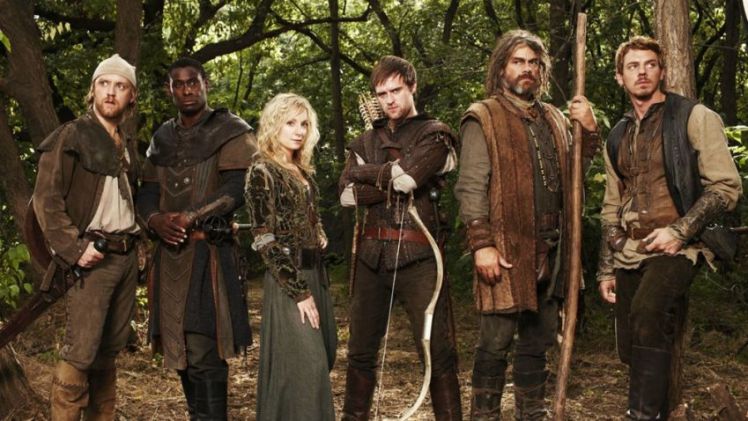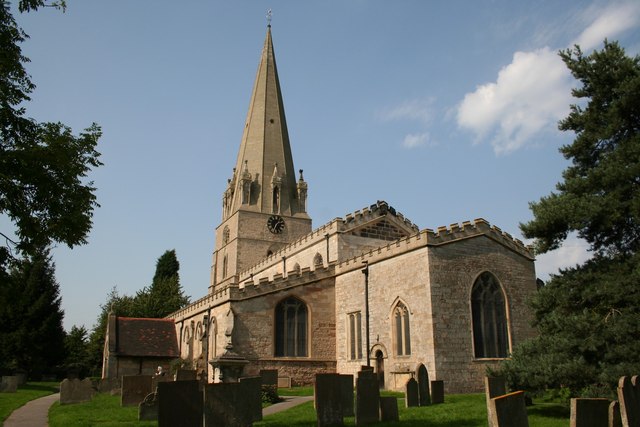“Deep in the heart of England there lives a legend” as the early 2000s BBC series would tell us.
Using our two scopes, what can we first say empirically about Robin Hood?
 The legend of Robin Hood, Marion, the Merry Men and the Sheriff of Nottingham is a narrative that has endured since before the earliest written reference in the late 1370s by William Landland in his moral satire “Piers Plowman”. Whilst there are versions of Robin Hood in Scotland and parts of South England, even in Barnsdale, Yorkshire, the final settling place of the story takes place in Nottingham and Sherwood Forest.
The legend of Robin Hood, Marion, the Merry Men and the Sheriff of Nottingham is a narrative that has endured since before the earliest written reference in the late 1370s by William Landland in his moral satire “Piers Plowman”. Whilst there are versions of Robin Hood in Scotland and parts of South England, even in Barnsdale, Yorkshire, the final settling place of the story takes place in Nottingham and Sherwood Forest.
As to whether or not there really was a person called Robin Hood, there is no specific evidence for this. The closest evidence we have was discovered during the 1990s after searches in records dating back as early as 1230 revealed several references to outlaws named “Robehod”. Whilst these may have been the real names of the outlaws, it’s more likely they were false names given by the miscreants to the law keepers in order to protect their families from retribution for their crimes.
The story of Robin Hood has experienced a love, hate affair with the Church over time, including one occasion in the sixteenth century where Bishop Hugh Latimer instructed the people they should not be celebrating “Robyn hoodes day” in May, for they should be in church instead! However, as we will see later, the story of Robin Hood is one that is truly Christian in origin.

Despite the ambivalence of the official Church, Julian Barnes (in his novel, England (1998)) describes the Robin Hood legend as such:
“Robin Hood and his Merrie Men. Robin through the glen. Stole from the rich, gave to the poor. Robin Hood, Robin Hood. A primal myth; better still a primal English myth. One of freedom and rebellion – justified rebellion of course. Wise, if ad hoc, principles of taxation and redistribution of income. Individualism deployed to temper the excesses of the free market. The brotherhood of man. A Christian myth too, despite certain anti-clerical features. The pastoral monastery of Sherwood Forest. The triumph of the virtuous yet seemingly outgunned over the epitomic robber baron.”
Let us move on to using our mythopoeic scope to further examine the legend of Robin Hood…

Robin Hood scholar Stephen Knight proposes four periods in the development of the myth:
- Bold Robin Hood – pre-Reformation period
- Robert, Earl of Huntingdon – post-Reformation period
- Robin Hood Esquire – Late C18 & C19.
- Robin of Hollywood – C20+
And before this there must have been a fifth (or zeroth?), oral tradition which of course we have no record of.
Throughout the development of the story, there are elements which remain unchanged:
- Robin is an outlaw.
- He has his community of “Merrie men” who throughout the development are Little John, Will Scarlet and Much the Miller’s Son.
- They live and hide in the Forest.
- They’re skilled archers – Robin being the best, always winning archery competitions.
- The arch-enemy is the Sheriff (later of Nottingham).
- They poach the king’s deer and rob travellers in the Forest, but in early accounts they do this pleasantly. “Come and eat with us” is their approach before relieving them of their goods.
- Robin doesn’t like monks.
- He remains loyal to the true king of England.

Some of the differences in the stories as they develop include:
- Friar Tuck and Maid Marion first appear in the eighteenth century play version of Robin Hood.
- Robin “robs from the undeserving and helps the deserving, but doesn’t rob from the rich and give to the poor”
- The king can be an Edward not Richard I,
- Robin is a plain yeoman, an emerging middle-class somewhere between peasant and social gentry. He is thus a liminal character, a hero for everyone, never straying too far from the middle path.
- In the earlier versions, Robin is a good Catholic, devoted to the Virgin Mary.
Regarding the outlaw nature of Robin, the earliest accounts have him standing between the righteous justice of the King and the unrighteous injustice of the Sheriff. He both affirms and subverts authorities, affirming the true justice of the King against the perverted justice of the Sheriff.
He is not a social revolutionary, but is a seeker of restorative justice and the re-establishing of things as they used to and ought to be. However, possibly inspired by latter versions of the story, for some he is held up to be a revolutionary character:
“If you thought that we would do nothing, you’ve misunderstood, for we are the sons and daughters of Robin Hood.”
Sons and Daughters of Robin Hood, Damh the Bard.

What of the religious nature of earlier versions of Robin Hood? I’ve already alluded to it being a Christian myth, despite modern claims that Robin Hood is a story of pagan origin (this may have been reinforced via a few episodes of the 1980s Robin of Sherwood series containing Herne, the May celebration of Beltane and the modern Pagan phrase “Blessed be” within them). The culture which gave birth to the story was Medieval England, which at the time had the state religion as Roman Catholicism. Robin represents goodness and honesty (not that those are qualities are the sole domain of Christianity I hasten to add!). The stories portray monks and nuns as not living up to the standards their calling demands, including later stories telling of Robin’s life being taken by being deliberately bled to death by an abbess. They call the hierarchy of the Church itself to account for their poor actions towards the laity. However, despite the failures of the Church, Robin remains devoted to the saints and insists on regularly taking Mass before committing his next deeds. Academic researcher Pollard believes he is portrayed as a “model of contemporary lay Christianity”, itself a part of the late medieval blurring of the boundary between the clergy and the laity.
Robin is a character who inhabits the borderland liminal spaces, both legally and religiously!

Robin’s domain is the greenwood of Sherwood Forest, a mythical place where it’s always May, the trees are coming into leaf, and fertility abounds – very similar to Arcadia in which another Green Man, Pan, was said to reside. The greenwood is an alternative kingdom, with its own social order and just laws. It’s founded on a deep awareness that monarchs never fully live up to their ideals or rhetoric, and recognises that governments often fail in their promises to put right the evils of the past.
“We’ve all watched you on our TV, right honourable gentleman apparently, different voices with only one aim, to win my vote and to win the game.”
Sons and Daughters of Robin Hood, Damh the Bard.
The greenwood is a levelling place with opportunities for all to rise up and achieve the fullness of their being.

In later versions from the eighteenth century, we encounter the ‘greenwood marriage’ between Robin and Marion, presided over by the highly religious yet outlawed Friar Tuck. This would have itself been unlawful as weddings at that time had to be carried out under a roof – and still do to the present day in England and Wales.
Robin Hood is the one who can skilfully pass through the forest undetected, hunting (possibly wearing the skin / antlers of the stag to mask his scent), blending in, helping, having a spiritual nature which seeks balance. In Robin Hood we see glimpses of the Green Man in the greenwood?

Despite certain differences, there are many similarities between Robin Hood and the person of Jesus:
- Can remain undetected by those who are oblivious to his presence
- Has a deep religious belief and practice
- Challenger of power that is wielded unjustly
- A seeker of balance and restoration of justice, sometimes involving righteous violence
- Able to deal rightly with both rich and poor, male and female
- A creator of community of loyal followers
- Caring towards those who have passed over
- Rejected by religiosity
Our exploration of Jesus and the Green Man continues in part four as we investigate Cernunnos.
Interesting reading. I’m a Druid living in Glasgow but I originate from Huthwaite. Just a correction to this piece, you state that for a marriage to be legal in the UK, it has to be carried out “under a roof”. That’s not the case in Scotland, where the celebrant is the only legal requirement for a marriage and last year at the summer solstice, just to highlight the point, my self and my wife (also a Druid) married using our own Druid created ceremony on the lawned area of a university owned priory overlooking Loch Lomond completely outdoors.
LikeLiked by 1 person
Indeed you are correct, my mistake. Thanks for letting me know this fact. I’ve updated the original article to reflect this. Your wedding venue sounds idyllic as we’ve stayed in Luss at a B&B and enjoyed the area so much we spend another night on top of the three we booked in for.
One day in England & Wales we may be able to carry out weddings outdoors – I can only hope, living in the boundaries of Sherwood Forest myself.
LikeLike
Yes, I know the area well, only moving up here to Glasgow 6 years ago. The venue was Ross priory if you want to google it, on the south east bank of Loch lomond. I look forward to reading more of this and I will be doing some more reading of your earlier stuff.
LikeLiked by 1 person
Wow – it’s simply gorgeous! Beautiful place – and am a little green with envy you were able to have such a beautiful venue.
My own leanings are towards the Druidic side of things – as you can probably tell :D. Hope you find the other stuff of interest too! This is where I hope the Awen and Amen can meet peacefully
.
LikeLike